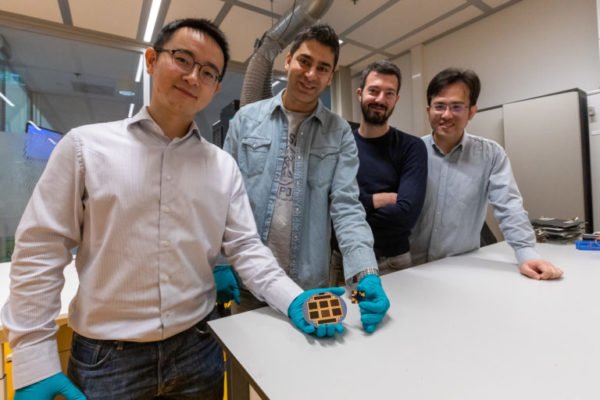From pv magazine global
The Netherlands Organisation for Applied Scientific Research (TNO), the Delft University of Technology, the Eindhoven University of Technology, and Belgian research institute Imec have achieved a 30.1% power conversion efficiency with a semi-transparent perovskite solar cell, combined with a crystalline silicon solar cell in a four-terminal tandem configuration.
In November 2021, the consortium achieved a 29.2% record efficiency for the device, from an efficiency rate of just 28.7% in March 2020
“The development of the cell will continue until practical limit for two junction devices are reached, however it is key to bring the technology to the market to benefit from a faster learning curve to devices that are actually mass produced,” Gianluca Coletti, TNO’s program manager for tandem PV technology, told pv magazine.
The research institutes, which are all part of the Solliance consortium, were able to increase the cell’s overall efficiency by raising the efficiency of the perovskite cell – a highly near-infrared transparent perovskite device built by TNO with TU Eindhoven and imec.
“This result was achieved by first implementing highly transparent contacts and then working on improving one by one the absorber layer and each of the transport layers,” Coletti explained.
According to the researchers, the efficiency rate of the 3 mm x 3 mm perovskite cell used for the tandem cell increased from 17.8% to 19.7%, a result which was certified by the European Commission Joint Research Centre (JRC) in Ispra, Italy.
“This type of solar cell features a highly transparent back contact that allows over 93% of the near-infrared light to reach the bottom device,” said TNO researcher Mehrdad Najafi. “This performance was achieved by optimizing all layers of the semi-transparent perovskite solar cells using advanced optical and electrical simulations as a guide for the experimental work in the lab.”
The scientists placed the perovskite device on top of a silicon heterojunction (SHJ) cell developed by TU Delft.
“The silicon device is a 20×20-mm2 wide, heterojunction solar cell featuring optimized surface passivation, transparent conductive oxides, and copper-plated front contacts for state-of-the-art carrier extraction,” said TU Delft researcher Yifeng Zhao.
In a recent paper, the researchers said that the cell was used in 24.5 mW/cm2 bifacial tandem mini-modules with an area of 100 cm2 in combination with a PERC bottom cell. The panels exhibited a 3 mW/cm2 gain compared to the same device with a monofacial architecture. According to the scientists, outdoor results have shown that the module can outperform the monofacial counterpart by more than 25% in a 10% albedo environment.

Image: Solliance
Solliance
This content is protected by copyright and may not be reused. If you want to cooperate with us and would like to reuse some of our content, please contact: editors@pv-magazine.com.









Excellent!